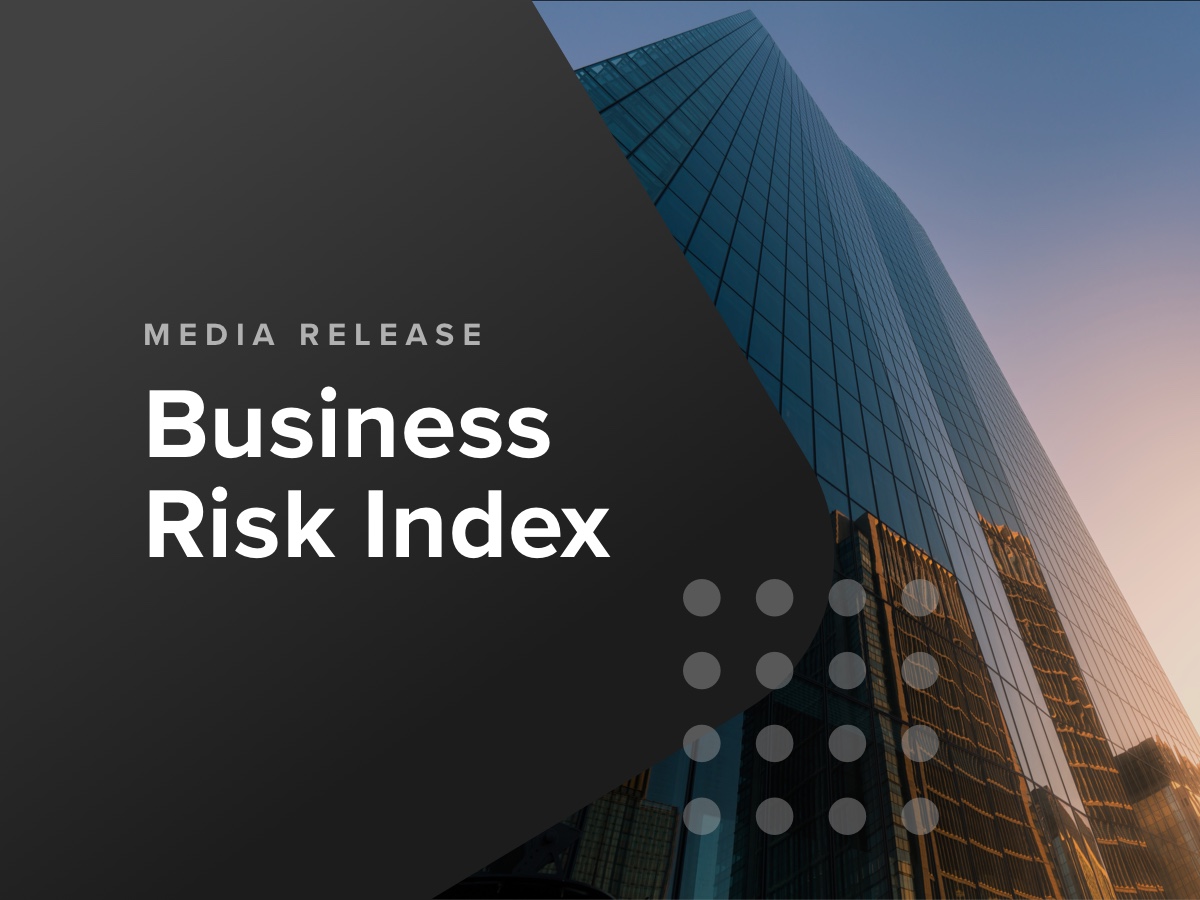Omicron heavily drags on trade receivables and prolongs recovery
The latest CreditorWatch Business Risk Index captures circumstances for January 2022, a month when Omicron bit the economy hard and smashed the optimistic expectations of thousands of Small and Medium-sized Enterprises (SMEs).
- The CreditorWatch Business Risk Index (BRI) provides unique insights into the health of Australian businesses by region and industry.
- Data from CreditorWatch for January 2022 reinforces the turmoil many SMEs faced at the start of this year as the Omicron variant heavily impacted demand conditions. Many SMEs were forced to close their doors again, following so much earlier promise, as the commercial viability of staying open simply wasn’t there. Many will return over the course of the March 2022 quarter and into the June quarter, but a significant number won’t. Extensive staff shortages form part of this story.
- Trade receivables continued to decline – now down around 50 per cent on pre-Covid levels. The number didn’t ‘pop’ in December, as was widely anticipated. Then the number fell dramatically in January 2022, delivering a 45 per cent contraction for the January 2021 ‘quarter’ compared to a year earlier.
- The latest NAB quarterly Business Confidence and Conditions survey found that a record 85 per cent of businesses were facing a labour shortage.
- We noted in last month’s update that the economic recovery time frame has been extended through to at least the first half of 2022. That may become 2022H2.
- Key industries to watch in early 2022 in terms of the probability of default (PD) over the next 12 months include: Accommodation and Food Services (consistently the most exposed industry and one of Australia’s largest employers); and Information, Media, and Telecommunications.
- Key geographical regions at risk in terms of PD are dominated by Western Sydney, including Bankstown and Canterbury.
There was a degree of optimism in the air in November last year. Economies in Australia were opening, providing considerable promise for thousands of SMEs, albeit under a cloud of labour and materials shortages. Then in the first week of December we heard about and experienced the impacts of the Omicron variant of COVID-19. This skittled thousands of businesses as the holiday season simply didn’t pan out as expected. We are still recovering from that. We will, but don’t expect a sustainable recovery until the second half of 2022. Omicron has left the Australian economy with considerable scars.
Take Accommodation and Food Services as an example. This is a frontline industry rattled by the uncertainties of ‘do we, don’t we’; ‘can we, can’t we’ operate our business. CreditorWatch data reveals that the PD for this industry is consistently higher than any other industry. That’s tough for business owners, many of whom leverage their family home to support their small business. That’s before we mention the tens of thousands of employees and causal workers who rely on this industry.
The January 2022 BRI reveals that the three industries most at risk in terms of the probability of payment default over the twelve months are: –
| 1. Accommodation and Food Services: 5.69% |
| 2. Information, Media & Telecommunications:4.61% |
| 3. Financial & Insurance Services: 4.39% |
It is unsurprising that Accommodation and Food Services tops the list. It’s been a topsy-turvey ride from one of Australia’s largest employer groups and on top of that, Omicron severely crunched any prospect of a seasonal recovery. Watch that space.
Arts and Recreation Services, together with Education and Training appear to have now firmly dropped off this unwelcome list. These industries have been replaced by Information, Media and Telecommunications and Financial and Insurance Services. Some in these industries will likely not survive a more turbulent summer season than budgeted for. Those with a strong COVID-influenced business plan should thrive, a point CreditorWatch has made before.
The industries with the lowest probability of default over the next 12 months are: –
| 1. Health Care and Social Assistance: 3.16% |
| 2. Mining: 3.23% |
| 3. Agriculture, Forestry and Fishing: 3.39% |
These results reflect the dynamics of economic conditions in Australia.
Healthcare and Social Assistance is dominated by federal and state/territory funding and, sadly, by COVID outcomes. The mining industry is benefiting from strong commodity prices and appears to be still in good shape. The story for agriculture is far from universal – extensive flooding in key regions is a good thing for some, a devastating outcome for others. Overall, though, the industry is in relatively good shape.
Payment arrears by industry
The highest number of payments by arrears is: –
| 1. Construction: 12.41% |
| 2. Accommodation and Food Services: 10.92% |
| 3. Information, Media and Telecommunications: 10.71% |
The construction industry has been particularly hard hit by the pandemic. The industry has some unique payment structures which are contributing to a high rate of arrears. If the industry can work through its supply chain disruptions and blowouts in the cost of materials such as timber, it will be in good stead.
Accommodation and Food Services was a major loser from Omicron. Things were looking so much better towards the end of last year, but then fell apart. That is why the industry sits at number two on the list. A fundamental uncertainty for the overall economy is how long it takes for this key industry to sustainably improve.
The number of defaults
The number of defaults increased by 2.1 per cent over the three months to January 2022, to be up by a strong 15.0 per cent compared to the equivalent period twelve months ago.
It’s too early to call it, but we may be seeing tentative signs of rising defaults as businesses adjust to more normal economic conditions, pushed along by banks and the Australian Taxation Office (ATO). That having been said we’ve heard about Omicron-related support packages from the NSW and South Australian governments. Welcome, but they may provide examples of how we are kicking the can down the road for a while yet.
Court actions
The number of court actions looks to be emerging from its slumber. While in original terms court actions fell in December and January, the levels are still elevated compared to last year overall. Over the 12 months to January this year, court actions were down by 7.0 per cent, but on a quarterly basis they were up 35 per cent. Compared to the three months to January 2021, the number of court cases are up 58 per cent. Signs of normality are returning, with high vaccination rates and Omicron peaking over the second half of January. Court actions may just be a key leading economic indicator.
External administrations
The number of external administrations dropped sharply in January 2022, but that is a familiar seasonal outcome. Looking through the latest result, administrations increased by nearly 1.0 per cent in the January 2022 ‘quarter’ to be up by 1.4 per cent over the year. These are hardly figures to shoot the lights out but, like court actions, the latest outcome sheds light on the prospect of businesses needing to operate in a more normal credit environment as we proceed through 2022.
Credit enquiries
The number of credit enquiries is a worry. The number has been trending down since mid-2021. Credit enquiries fell by 12.2 per cent over the three months to January 2022 to be down by 0.3 per cent compared to the equivalent period last year. If we want to see evidence of a short term strong economic bounce-back, this CreditorWatch metric shouldn’t be moving the way it is.
Trade Receivables
This metric looks just plain awful. Trade Receivables are down by 45 per cent over the three months to January 2022 when compared to a year earlier. This metric is a bit like a small proxy for GDP – businesses are going well, or they are not, and economic outcomes follow. Latest CreditorWatch updates provide a weak indication of short-term economic growth prospects.
Some key CreditorWatch data suggests an imminent turnaround, while evidence from measures like Trade Receivables (and Business Turnover) highlight the risk.
The Economic Outlook
The summer of 2021/22 was so full of promise, but Omicron came along in the first week of December and it all evaporated. There are some signs of economic and credit normalisation in the latest CreditorWatch results – external administrations being one example. Ultimately, though, CreditWatch’s data points to Australia’s economic activity running at a much slower rate than desired. We are in for a bumpy ride, which creates the biggest challenge for SMEs – uncertainty.
Harley Dale
CreditorWatch Chief Economist



